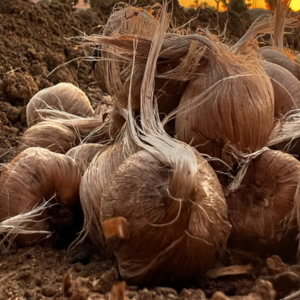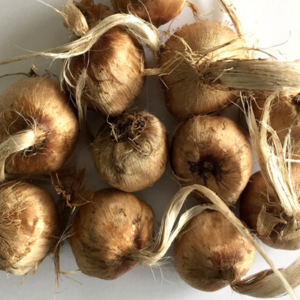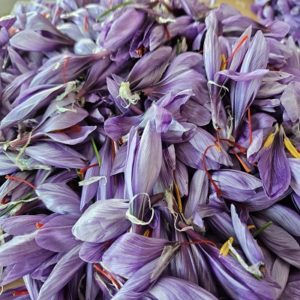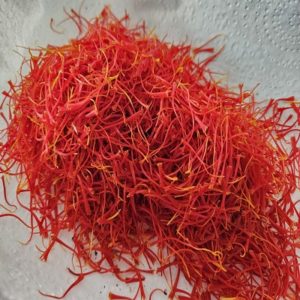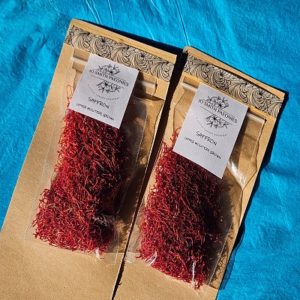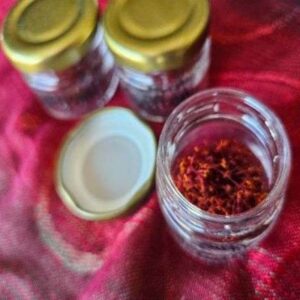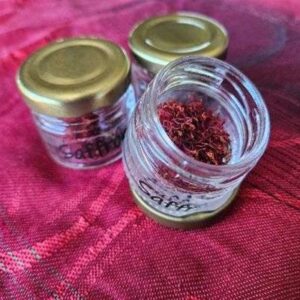Saffron Spice and Saffron Corms
Saffron NZ
Saffron: The Golden Spice with Remarkable Health Benefits
Origins and Cultivation
Saffron, scientifically known as Crocus sativus, traces its origins to Southwest Asia, where it has been cultivated for over 3,500 years. The delicate threads are painstakingly harvested from the stigma of the saffron crocus flower, requiring meticulous care and attention.
Today, saffron is primarily cultivated in Iran, Spain, India, and Greece, with each region imparting its own distinctive flavor profile and aroma to the spice.
While the saffron industry in New Zealand is still emerging, it holds strong potential thanks to the country's ideal growing conditions and a rising demand for locally produced, high-quality saffron. That said, challenges remain—particularly the labor-intensive nature of harvesting and a limited number of commercial growers.
If you're looking to get involved in saffron cultivation or source premium local saffron, you're in the right place—we're here to help.
Flavor Profile and Culinary Uses
Saffron is celebrated for its distinctive taste, which can be described as floral, honey-like, and slightly bitter. Despite its high cost, saffron is used sparingly due to its potent flavoring properties. A pinch of saffron can transform ordinary dishes into extraordinary culinary experiences.
It is a staple ingredient in various cuisines around the globe, enriching dishes such as paella from Spain, risotto Milanese from Italy, and biryani from South Asia. It is also used in desserts, teas, and even beverages.
Health Benefits
Beyond its culinary uses, saffron is valued for its potential health benefits. Rich in antioxidants such as crocin, safranal, and kaempferol, saffron possesses anti-inflammatory properties and may contribute to improved mood, reduced anxiety, and enhanced cognitive function. It has also been studied for its potential role in treating conditions like depression and Alzheimer's disease, libido, and sexual function, as well as reduce PMS symptoms and enhance weight loss.
Best of all, it’s easy to add to your diet. Try adding saffron into your favourite dishes to take advantage of its potential health benefits. Saffron has a subtle taste and aroma, which makes it easy to add to all kinds of food. It pairs well with savoury dishes and can be soaked in hot water to give a deeper flavour. Saffron is so good in so many ways, but in my opinion, it excels in autumn style home- cooking. Its sweet, earthy flavour lends itself well to both sweet and savoury dishes, and it's popular in stews, risottos, and soups, as well as puddings, baked goods, and ice cream (this one is not very autumnal, but ice cream is an all-year food in my opinion).
Cultural Significance
Saffron holds a significant place in various cultural practices and traditions. In ancient Persia, it was used not only as a spice but also as a dye, perfume, and medicinal herb. The spice has been mentioned in ancient texts, including the Bible and the works of Greek philosophers.
In many cultures, saffron is associated with luxury, prosperity, and good fortune. It is often used in religious ceremonies, festivals, and celebrations as a symbol of purity and auspiciousness.
Buying and Storing Saffron
When purchasing saffron, it's essential to choose high-quality threads that are deep red with a slightly orange hue. Store saffron in an airtight container away from light and moisture to preserve its flavor and potency. Due to its costliness, saffron is sometimes adulterated with other substances, so it's wise to buy from reputable sources.
Why Saffron?
Saffron is more than just a spice; it is a testament to centuries of tradition, craftsmanship, and cultural exchange. Its golden threads continue to weave through history, enriching dishes and lives around the world. Embrace the magic of saffron and savor the essence of its timeless allure.
Whether you've been cooking for years or just love trying new flavors in the kitchen, saffron has a special way of bringing something truly magical to your meals. With its warm color, unique aroma, and deep cultural roots, it’s more than just a spice—it’s a chance to explore new tastes and traditions from around the world. A pinch of saffron can turn a simple dish into something memorable.
10 Benefits of Saffron
-
Saffron is rich in plant compounds that act as antioxidants, such as crocin, crocetin, safranal, and kaempferol. Antioxidants help protect your cells against oxidative stress.
-
Saffron is high in antioxidants, which may help kill cancer cells while leaving healthy cells unharmed.
-
Saffron may help treat symptoms of mild-to-moderate depression.
-
Both eating and smelling saffron appears to help treat PMS symptoms, such as irritability, headaches, cravings, pain, and anxiety.
-
Saffron may have aphrodisiac properties for both men and women and may especially help those taking antidepressants.
-
Saffron has been shown to reduce snacking and curb your appetite. In turn, these behaviours may help you lose weight.
-
May reduce heart disease risk factors. Animal and test-tube studies indicate that saffron’s antioxidant properties may lower blood cholesterol and prevent blood vessels and arteries from clogging.
-
May lower blood sugar levels. Saffron may lower blood sugar levels and raise insulin sensitivity, as seen in test-tube studies and mice with diabetes.
-
May improve eyesight in adults with age-related macular degeneration.
-
May improve memory in adults with Alzheimer’s disease. Saffron’s antioxidant properties may improve cognition in adults with Alzheimer’s disease.
